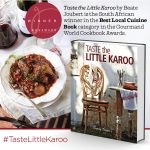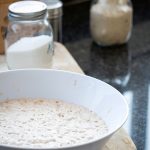Michele Mistry is the Ayurvedic Nutrition Consultant and Director of INDIKAAP Vegan Ayurveda.
Michele studied Ayurvedic Nutrition and Marma Massage at an Ayush-accredited treatment and training facility in Kerala India. She became a Raj yoga facilitator with the Heartfulness Institute in 2004. As the owner of INDIKAAP Vegan Ayurveda, her intention is to inspire people to make life-affirming food choices, grounded in the time-honoured holistic health science of Ayurveda. She also brings greater awareness of Ayurveda through consultations, retreats and a range of hand-crafted food products that make an Ayurvedic lifestyle simple.
What is Ayurveda?
Ayurveda is a Sanskrit word meaning ‘life knowledge’. It is one of the world’s oldest holistic healing systems that sees good health and wellness as a result of being in balance with yourself and your environment. Compatible with all other health sciences and alternate modalities, Ayurveda is non-toxic and encourages early prevention over cure.
Why is Ayurveda important to you and why do you think people should bring it into their lifestyle?
Ayurveda offers a scaffold that helps me to better observe and consciously adapt to the changes within myself and the unpredictability of my environment. Essentially, it is a means to create rhythm (not routine) out of chaos. I feel we are all in search of greater control and connection to our bodies and lives. Through our own observation of ourselves, we gain greater awareness and control of our own health and well-being before discomfort turns into illness. Incorporating even simple Ayurvedic practices into daily life can offer relief from discomfort and pain. We can reduce our reliance on medication and reduce our health care bills. It follows that we then have more time and energy to devote to that which brings us joy.
View this post on Instagram
Who should consider Ayurveda?
Anyone! If you’re healthy and want to maintain your health; if you’re feeling unwell, but aren’t diagnosed with a specific illness; if you’re in pain and have non-chronic issues; or if you do have chronic health issues and need holistic support, you would find great value in Ayurveda. Ayurveda can be used at all stages of life during all rites of passage because it is a holistic health system. Using women as an example, it is effective for hormonal and menstrual issues, sexual intercourse, birth, pre-natal and post-partum health, breastfeeding, childhood development and growth, fertility, menopause and old age.
What Ayurvedic services do you offer?
As a nutrition consultant, I work with individuals and families to create meal plans, host cooking classes and share lifestyle changes that help them to live healthier lives. Seasonally, I offer clients an Ayurvedic cleanse, in a guided group, which includes lifestyle practices and meal kits. Twice a year I host retreats to give people an immersive experience of the Ayurvedic lifestyle.
I work with healthcare practitioners, like doctors, dieticians, and nutritionists, to assist their patients with meal plans for recovery and other outcomes.
In food retail, I’ve created a range of vegan, gluten-free and sugar-free food products making an Ayurvedic lifestyle an easy choice. These products are created in harmony with Ayurvedic principles and are aligned with any food preference or dietary requirements.
View this post on Instagram
How can Ayurveda change the way we approach food?
Preparing food and nourishing ourselves are daily practices that when adapted to be life-affirming rather than unconscious and life-depleting, have a positive and measurable impact on our health. We begin to choose food for the desired impact we know it will have, rather than only for its sensory appeal…although it can still look, smell and taste wonderful!
What does an Ayurvedic diet look like?
An Ayurvedic approach to cooking encompasses the ingredients, ingredient combinations and methods of preparation. Generally, an Ayuverdic diet is freshly prepared using whole foods and seasonal organic produce cooked in a way that is appropriate for that season. It is based on what is appropriate for the well-being of the person and doesn’t necessarily need to be vegan or vegetarian. Spice and herbs are used for their healing properties as well as their digestive and post-digestive effects. Although many Indian dishes are naturally Ayurvedic, an Ayurvedic diet is not Indian cuisine.
What type of food should be taken into account in Spring?
Spring is Kapha season, meaning there is a dominance of the earth and water elements in our natural environment. To maintain balance, avoid an excess of these elements in your internal environment by consuming foods that have opposite qualities to that of earth and water. These include warming herbs and spices, like cinnamon, ginger, sage and stinging nettle. Avoid foods that have a high-fat content or cause congestion, like dairy, and eat whole grains like sorghum, millet, and quinoa. Every person would need slightly different things during Spring depending on their dosha (i.e. Ayurvedic constitution) which you can find out by filling out the dosha test on my website.
View this post on Instagram
Your favourite item on your menu
Hands down a masala dosa with red onion, fresh cayenne chilli, coriander and Vegan cheese, served with mint & coriander chutney, coconut chutney and sambar.
Your ultimate food destination
Indonesia! They generally follow Ayurvedic principles including all Ayurvedic tastes. It’s like all the best parts of China, India and the South Asian Islands distilled into delicious meals.
Something about yourself that not many people know.
I have an aversion to drinking anything cloudy or mirky. So when I occasionally have alcohol, it needs to be a clear spirit, like gin or tequila.
Ingredient(s) that you couldn’t live without.
Ginger, sage and furikake seasoning (a blend of roasted sesame, cayenne chilli, seaweed and salt).
Your go-to dinner:
Steamed broccolini with garlic, black pepper and olive oil on a bed of tagliatelle – it’s a super simple 10-minute recipe. The sauce is made by blitzing equal amounts of soaked cashews and fresh basil leaves with some water, lime, and ginger, which is then heated through in a saucepan with some olive oil. Pour copious amounts of sauce over the broccolini and tagliatelle and sprinkling with furikake seasoning to finish.
ALSO SEE: Vegan substitutes 101
Feature image: VICUSCHKA via Getty Images









